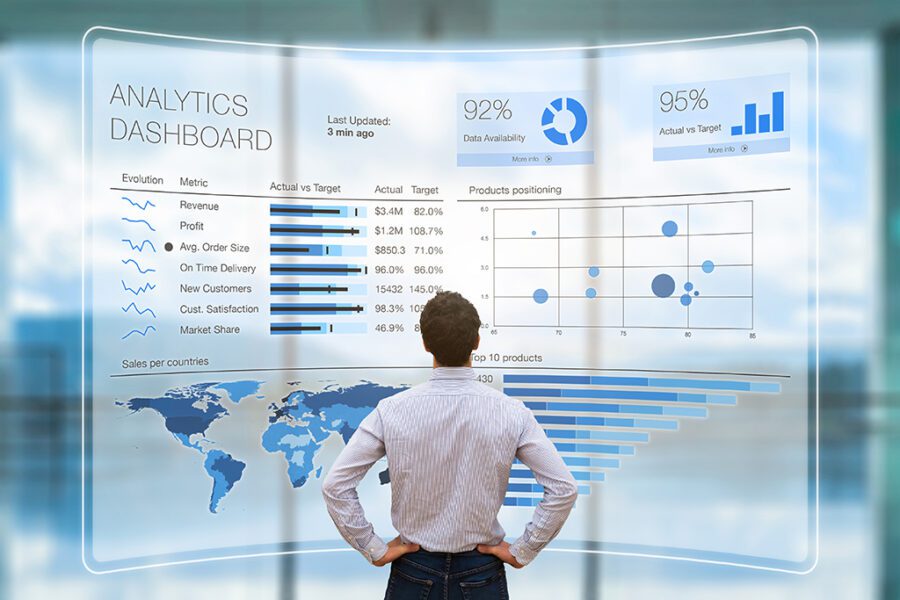In the modern business landscape, data is a critical asset that can either make or break an organization. To maximize the potential of data, businesses are turning to powerful tools like Power BI and Microsoft Fabric. These platforms are the backbone of business intelligence. And when they are combined with Azure Data Factory, they transform into a formidable force in data analysis and decision-making.
Power BI is Your Business Intelligence Companion
Power BI by Microsoft is a powerful business intelligence tool that allows organizations to visualize and share their data. It lets users build interactive dashboards and report by transforming data into useful insights.

Power BI can be tailored to your particular requirements, whether you are starting out or are a big enterprise. It seamlessly integrates with a variety of sources of data which makes it much easier to integrate data from various platforms and databases. Its intuitive drag and drop interface makes it possible for even non-technical users to produce meaningful reports.
Power BI supports real-time processing of data to ensure you always have the latest information. It comes with a range of visualizations, allowing users to present data in the most digestible and appealing manner. Collaboration and sharing of reports with colleagues can improve decision-making and helps to create a data-driven environment within your company.
Microsoft Fabric: The Weaving of Data Innovation
Microsoft Fabric is an orchestration framework that connects data across Microsoft services. It’s the fabric that weaves your data into one, usable entity, enabling companies to get insights easily.
Microsoft Fabric helps businesses maintain data consistency and integrity as they handle increasing data volumes. It works with a variety of services, ranging from Azure Data Lake Storage and Azure SQL Data Warehouse, to Power BI and more. The interconnectivity allows data to flow easily and allow insights to be derived from multiple sources.
Microsoft Fabric’s capabilities to transform data provide a wonderful illustration of its versatility. Use it to clean up and prepare data to be analysed. You can also use it to ensure that data complies to your organization’s guidelines on data governance. Microsoft Fabric ensures that your data is reliable, reliable and ready to be analyzed.
Azure Data Factory – The Gateway to Data Transformation
Azure Data Factory is another essential component in the modern business intelligence landscape. This cloud-based service allows you to manage and plan data-driven processes. By orchestrating data movement as well as data transformation, Azure Data Factory paves the way for meaningful insights.
One of the major advantages of Azure Data Factory is its versatility in connecting to various data sources. Your data is able to be integrated seamlessly, whether on-premises, in the cloud or both. This will give you complete visibility of the whole data ecosystem, regardless of where your data is located. The platform can handle batch processing, real-time streams of data and big data analytics. This allows it to be used for a variety of scenarios.
Azure Data Factory has a visually-oriented user interface that eases designing data pipelines. Even if you are not a programmer it is easy to design, schedule and monitor data pipelines. This software lets businesses manage their data integration processes and allow them to build data themselves.
The Power Trio: Power BI, Microsoft Fabric, and Azure Data Factory
When Power BI and Azure Data Factory when combined, they can create powerful three-in-one that will enhance your data analysis capabilities. What is their relationship?
1. Data Integration: Azure Data Factory is capable of connecting to many data sources. This will ensure that all the data you own are accessible. This data integration capability is integrated into Microsoft Fabric, which orchestrates the data from various services. This will ensure that your data is well-organized, cleaned, then it’s ready for Power BI analysis.
2. Data Transformation: Microsoft Fabric plays a crucial role in data transformation by allowing you to modify your data to meet your requirements for analytical analysis. It doesn’t matter if you’re data wrangling cleansing, or transforming, the fabric ensures that your data is curated to provide meaningful insights.
3. Power BI will take over once your data has been improved and is ready. It lets you create visually appealing dashboards and reports that make the data easier to comprehend. You can then present these findings and inspire your team members to take the right decisions based on data.
4. Scalability: Azure Data Factory scales seamlessly to handle growing amounts of data. Additionally, the power of Power BI and Microsoft Fabric makes sure that your data remains stable and reliable as your company grows.
5. Power BI and Azure Data Factory provide real-time insight, which can be crucial in making quick and agile decisions.
You can also read our conclusion.
Business intelligence is changing rapidly and companies must leverage data’s power to remain competitive. Power BI, Microsoft Fabric and Azure Data Factory offer a powerful combination that can propel your business intelligence initiatives to new heights. The trio of tools can assist you achieve amazing visualizations to improve data consistency, and speed up workflows. Discover the power of data with business intelligence.


